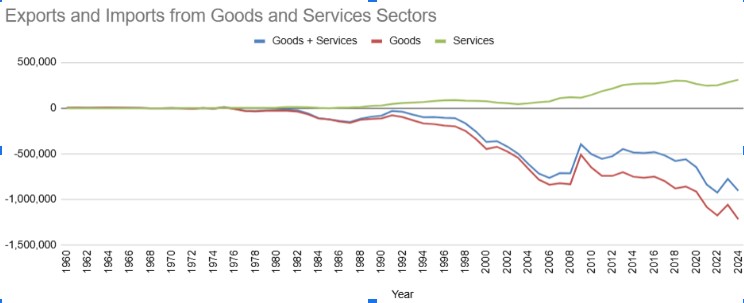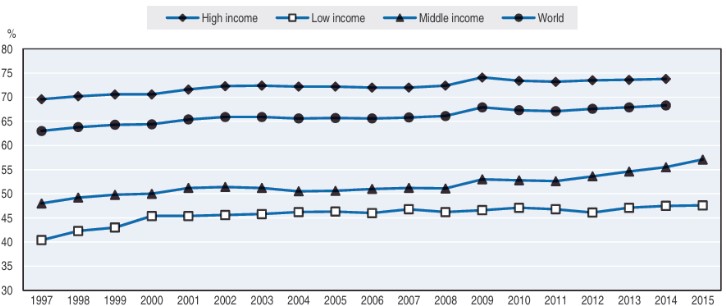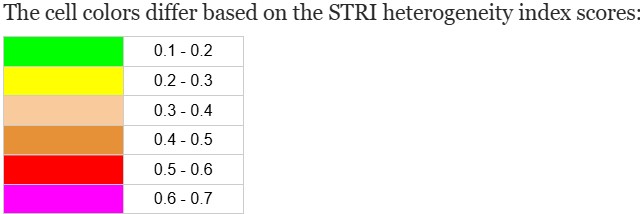The United States is a predominantly services economy with services contributing 80% to the GDP. Further the United States has a positive trade balance in services. Regulations and policies are important factors for services industries at both domestic and international levels and are open, complex and flexible. This means there are more opportunities for each country to draft them that will serve their national interests, national security and economy. As most countries are focusing on services to propel economies, framing effective and responsible rules and regulations will pave the way for growth and prosperity. At the international front, two countries with similar regulations and policies are well-suited as partners in services trade. It becomes easier for a business to expand globally when it enters a country with similar regulations. Here in this blog, I present countries with similar and dissimilar regulations compared to the United States using the data published by the Organization for Economic Cooperation and Development OECD.
Services and Services Economy
The US economy transitioned from predominantly Agriculture to predominantly Goods to predominantly Services economy. The services sector now contributes 80% to US GDP. The services sector has shown consistent growth in global trade and exports have been greater than imports, i.e. balance of trade has remained on the positive side. The following chart1 shows the growth of trade from the services sector since the 1980s.

The growth in contribution from the Services Sector to GDP increased not only in the United States but also in other high income countries. It has remained consistently high from the 1990s for high income countries. According to the chart below from the World Bank, high income countries have consistently had more than 70% of their GDP from the services sector since the 1990s. The chart further shows the rate of growth of the services sector is higher in middle income countries since the 2010s.

Industrialization and Automation increased productivity in the Manufacturing sector. The increased output has to reach the consumers or otherwise it is not possible to get benefits from increased productivity. Services played an important role in adding value to the manufacturing sector and in reaching more consumers. Goods increasingly needed services to function as well as to access more markets and thus services sector aided in domestic as well as international market expansion. When countries like China became a manufacturing powerhouse, manufacturing was shifted to countries like China and the US focused on the services sector by adding value to the products.
Services businesses helped in reaching more customers and also provided feedback or consultation to manufacturing businesses to further increase their productivity and/or to cost-effectively diversify their product portfolio. Thus manufacturing and services sectors were complementing each other. In due course, the services sector expanded to other sectors such as Finance, healthcare, education, logistics, travel and so on. OECD (Organization for Economic Cooperation and Development) which serves to promote sustainable policies for economic growth now tracks 22 such sectors under Services. The rapid advancement in Information Technologies and Internet has undoubtedly played important roles in the expansion of the services sector and global services trade.
Regulations play a crucial role in Services trade just as tariffs play a crucial role in Goods trade. Developing trade policies with favorable regulations thus fosters opportunities for growth in the services sector which already contributes 80% to the US GDP. The Peterson Institute estimates that eliminating barriers to trade in the services could increase United States services exports by as much as $1.4 trillion and create as many as 3 million jobs. In the United States where small businesses are the backbone of the economy with 50% contribution to GDP, it will be a good opportunity for services-based small businesses to attempt for international expansion and to grow the US economy.
Evolution of Services Trade
GATS (General Agreement on Trade in Services) under World Trade Organization took into effect in 1995. It is a multilateral organization that establishes rules and framework for trade in services. Regulations and trade agreements are drafted and agreed upon between two countries and GATS oversees that those regulations and agreements are transparent, fair and are honored by those countries. Regulations and trade policies in services trade are open, complex and flexible which means there are many opportunities and ways to draft them by countries to suit their national interests, national security and economy.2
Services trade is supplied in 4 ways or modes:
1. Cross-border supply
2. Consumption abroad
3. Commercial presence
4. Movement of natural persons
Under cross-border supply, the service can be provided by the business from their country itself to a business or market in another country without having to travel. E.g. an educational institution providing online classes to students in another country.
Under Consumption abroad, the business or individual who wants to use the service travels to the country providing the service. E.g. a student travels to the country where the institution conducts the classes.
Under Commercial presence, the business has to establish an office or affiliate in the foreign country to provide the service. E.g. the educational institution has to establish a physical campus or classroom in the country where it wants to provide the classes.
Under Movement of natural persons, a person from the business travels temporarily to the country to provide the service. E.g. a professor or instructor from the educational institution travels to the country to conduct the class sessions.
Each country sets its own regulations and rules for each sector with primarily two objectives: (1) To provide market access to businesses (2) To safeguard national treatment and interests. Governments in a country will set up rules for a foreign business to gain access to their country’s market. It may also provide a different set of rules or treat businesses from a foreign country differently. These regulations may be in the form of various rules such as – having different standards for qualification, requiring to establish a physical office, restricting entry through visa programs, taking certifications and licences, setting higher quality standards, setting up quotas, etc..
The regulations for the above 4 modes of supply of services with the two primary objectives in goal are set up and monitored for various services sectors such as: (1) Telecommunications services (2) Television and broadcasting services (3) Motion pictures services (4) Air transport services (5) Sound recording services (6) Computer services (7) Maritime transport services (8) Rail freight transport services (9) Road freight transport services (10) Courier services (11) Distribution services (12) Logistics cargo-handling services (13) Logistics storage and warehouse services (14) Logistics freight-forwarding services (15) Logistics customs brokerage services (16) Commercial banking services (17) Insurance services (18) Legal services (19) Construction services (20) Architecture services (21) Accounting and Auditing services (22) Engineering services (23) Travel services (24) Healthcare services (25) Education services and so on.
Comparison of regulations in the US with other countries
The STRI (Services Trade Restriction Index) tool and database3 developed by OECD (Organization for Economic Cooperation and Development) is helpful to track and compare regulations framework across countries. The tool was released in 2014. According to OECD, the STRI regulatory database contains information assimilated from more than 16,000 laws and regulations for 22 sectors in 44 countries. These are the 35 OECD countries and Brazil, China, Colombia, Costa Rica, India, Indonesia, Lithuania, the Russian Federation and South Africa. A composite score STRI index was developed to assign a score for each sector in each country. The score is based on five policy areas – Restrictions on foreign entry, Restrictions on movement of people, Barriers to competition, Regulatory transparency and Other discriminatory measures such as taxes, subsidies, public procurement, national standards, international standards. STRI index is a composite score arrived at by assigning numerical values and weightages by sectors and countries.
STRI index score ranges from 0 to 1 where 0 means the country is open to trade without any restrictions and 1 means the country is highly restrictive to trade. While STRI index gives a quantitative overview for a single country, STRI heterogeneity index score indicates the similarity or dissimilarity of regulations between two countries. A score of 0 means the two countries have similar regulations and 1 means the regulations are very different.
OECD has studied the regulations under 5 broad sectors – (1) Computer programming, consultancy, and information service activities, (2) Construction, (3) Postal and courier activities, (4) Telecommunications, (5) Wholesale and retail trade; repair of motor vehicles and motorcycles. The following table has the STRI heterogeneity index scores between the United States and 49 other trading partner countries by each of the 5 sectors for the year 2023.

Based on the scores from the above table, regulations differ the most between the United States and Vietnam, United States and China, the United States and Kazakhstan in the telecommunications sector & between the United States and China in Postal and Courier Services. This implies that if a business in the telecommunications sector were to provide a service in these countries, then that business should expect to incur more time and cost to ensure compliance with regulations. On the other hand, the cells highlighted in green have the most similar regulations. This table serves as a guide for a business to know about their trading partner countries and to choose the most suitable country for international expansion and to provide their service.
Conclusion
The services sector accounts for 80% of US GDP. 4 in 5 Americans, i.e. 80% of Americans are employed in the services sector. Small businesses which are the backbone of the US economy contributing 50% to US GDP can find opportunities for engaging in global services trade and such engagements could boost growth for the business as well as for the entire economy. Regulations play an important role in Services trade. Analysis of data and tables published by OECD (Organization for Economic Cooperation and Development) and other global institutions such as World Bank could be used to assess and to choose countries for global services trade. In this blog, I gave an overview of services trade and presented how the STRI heterogeneity scores released by OECD can be used by businesses as a tool to shortlist countries for global services trade.
Bibliography
1. U.S. International Trade in Goods and Services
2. Services Trade Policies and the Global Economy by OECD
3.OECD Data Explorer web page for STRI Index
Image courtesy:
<a href=”https://www.freepik.com/free-ai-image/business-person-futuristic-business-environment_94958582.htm”>Image by freepik</a>








Leave a Reply